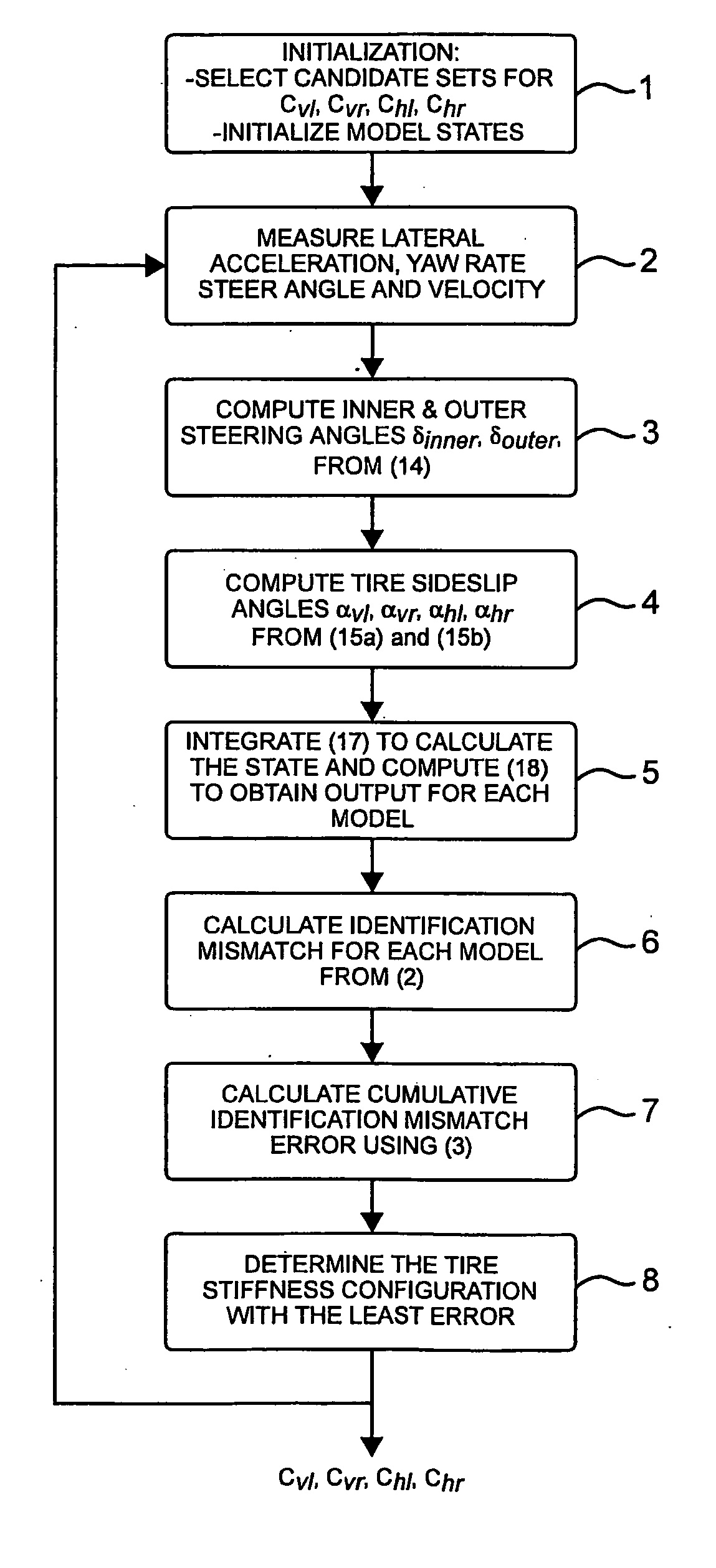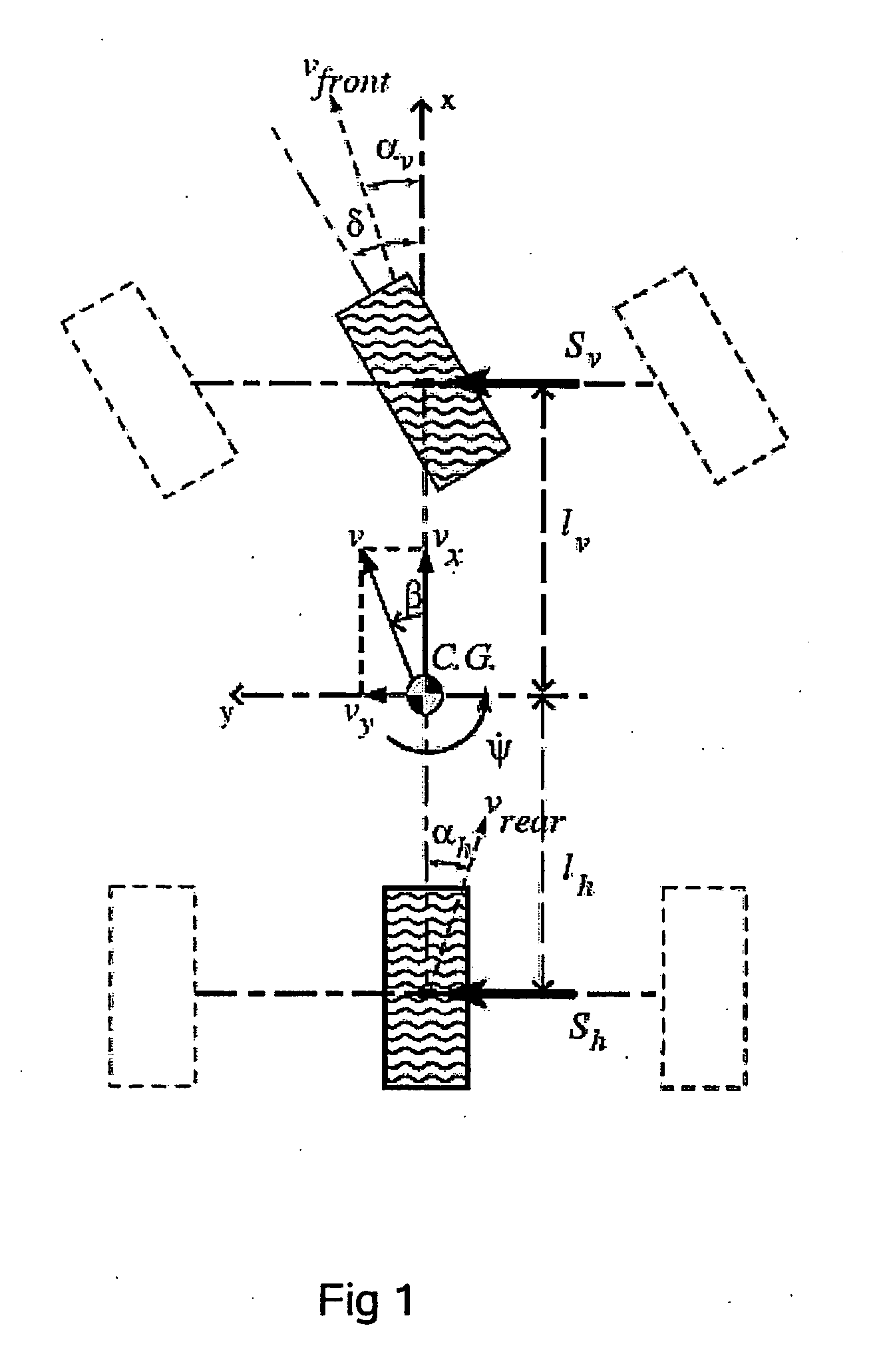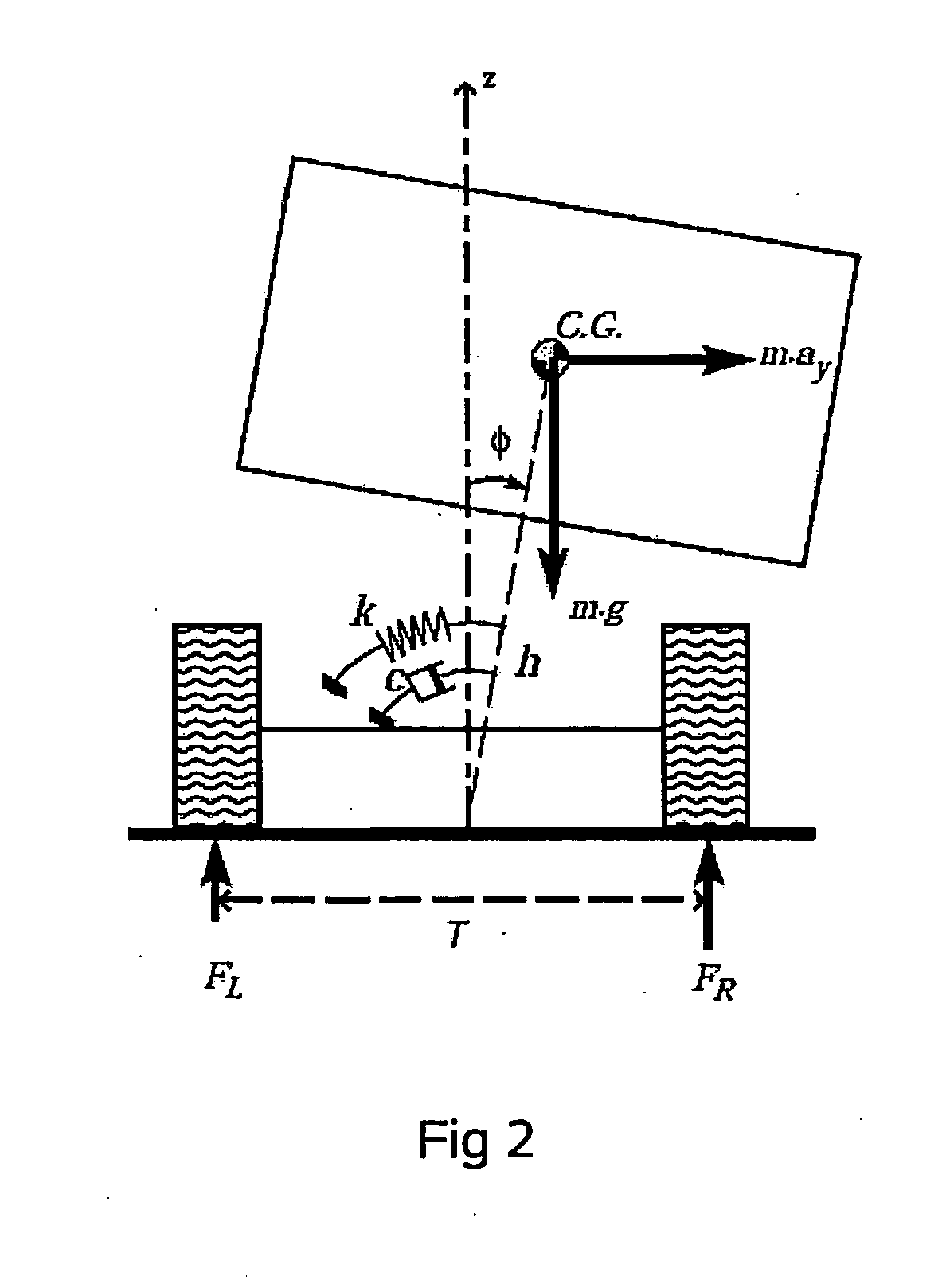Method for determining the centre of gravity for an automotive vehicle
a technology for automotive vehicles and centre of gravity, applied in the direction of hardware monitoring, structural/machine measurement, registration/indicating, etc., can solve the problems that the height of the cg cannot be easily inferred, cannot be measured online, and substantially in real time during the operation of the vehicle,
- Summary
- Abstract
- Description
- Claims
- Application Information
AI Technical Summary
Benefits of technology
Problems solved by technology
Method used
Image
Examples
first embodiment
[0103]In Step 6 of FIG. 8, the identification error ei(t) corresponding to the i-th model is calculated using equation (2) from the first embodiment, where the multiple model estimation structure to compute ei(t) is depicted in FIG. 14.
[0104]In Step 7 of FIG. 8, the cumulative identification error Ji(t) corresponding to the i-th model identification error is calculated using Equation (3) from the first embodiment, where ζ, γ, and λ are non-negative design parameters which can be appropriately chosen to weigh instantaneous and steady-state identification errors.
[0105]In Step 8 of FIG. 8, the model with the least cumulative identification error is calculated using equation (4) of the first embodiment and the corresponding parameter values (Cvl—p, Cvr—q, Chl—r, Chr—s) are obtained.
[0106]In the most basic implementation of the method depicted in FIG. 8, the models are constructed to detect a fixed and predetermined level of stiffness reduction in any combinations of the tires. In this c...
fourth embodiment
[0108]An aim of the fourth embodiment is to provide an arrangement for dynamically determining the individual tire cornering stiffness values Cvl, Cvr, Chl, Chr for each of the four tires, taking into account time variations in the vertical loads FZvl, FZvr, FZhl, FZhr on each tire.
[0109]To begin, the side force acting on each tire Sij, where the first index i={v,h} denotes “front” and “rear”, and second index j={l,r} denotes “left” and “right”, is given by:
Sij=Cij(FZij)αij, where i={v,h} and j={l,r} (19)
where αij is the side slip angle of the corresponding tires and tire stiffnesses Cij(FZij) are time-varying functions of the corresponding vertical forces.
third embodiment
[0110]As in the third embodiment, tire cornering stiffness parameters Cij(FZij) are assumed to be unknown but their nominal values corresponding to manufacturer-recommended pressure levels and for varying vertical loads are known. Again, this embodiment relies on the assumption that when and if any of the time-varying tire cornering stiffness values (and effectively the corresponding lateral forces) are found to be smaller than nominal levels by a certain threshold amount, then the corresponding tires must either have a non-optimal pressure (i.e., under / over inflation) and / or a persistent loss of grip as a result of reduced thread depth. Note that the variation of the tire cornering stiffness with respect to loss of inflation pressure or loss of tire thread depth will vary between different tire types, but these can be measured off-line by tire manufacturers through test rig evaluations.
[0111]Referring now to FIG. 9 which shows a functional block diagram describing an indirect estim...
PUM
 Login to View More
Login to View More Abstract
Description
Claims
Application Information
 Login to View More
Login to View More - R&D
- Intellectual Property
- Life Sciences
- Materials
- Tech Scout
- Unparalleled Data Quality
- Higher Quality Content
- 60% Fewer Hallucinations
Browse by: Latest US Patents, China's latest patents, Technical Efficacy Thesaurus, Application Domain, Technology Topic, Popular Technical Reports.
© 2025 PatSnap. All rights reserved.Legal|Privacy policy|Modern Slavery Act Transparency Statement|Sitemap|About US| Contact US: help@patsnap.com



